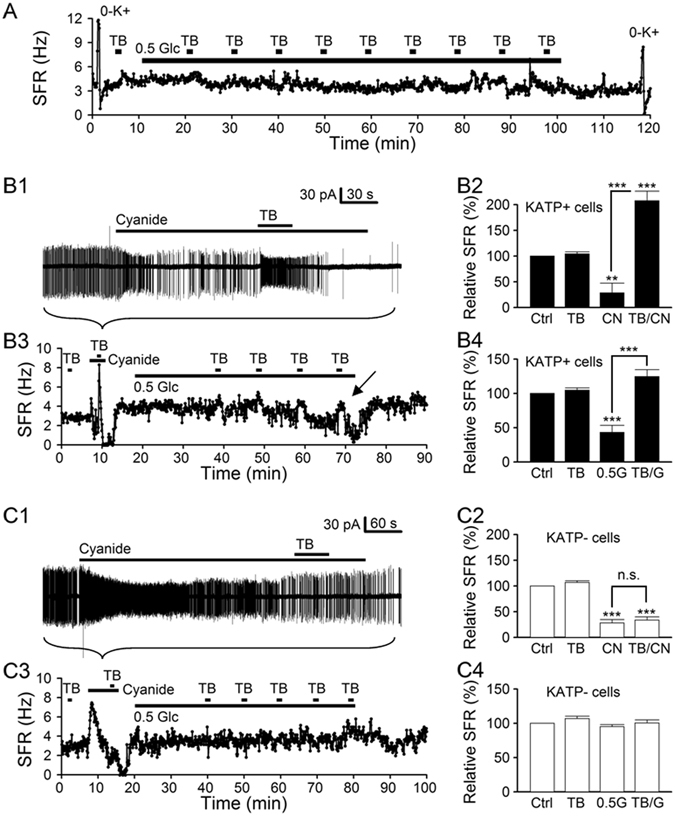Figure 7.

Hypoglycemia selectively inhibits the KATP-expressing SCN neurones. (A) A representative dSCN neurone showing a negligible response to the application of hypoglycemic (0.5 mM glucose) solution for 90 min. K+-free (0-K+) solution was applied to evaluate the cell condition (see Results for details). Daytime recordings (ZT 8). (B) Firing responses of KATP-expressing (KATP+) cells to cyanide (B1,B2) and to 0.5 mM glucose solution (B3,B4). For this representative KATP+ cell, the addition of cyanide rapidly increased and then decreased the firing rate (B1), with tolbutamide (TB) having little effect on firing rate in control (Ctrl) but greatly increasing it during cyanide inhibition (B1,B3). Daytime recordings (ZT 7). Statistics showing that cyanide (CN, B2) or hypoglycemia (0.5 G, B4) inhibits KATP + cells by opening tolbutamide-sensitive KATP channels (TB/CN, B2; TB/G, B4). Baseline spontaneous firing rate in KATP + cells: 3.2 ± 0.4 Hz (n = 11). (C) Firing responses of KATP– cells to cyanide (C1,C2) and to 0.5 mM glucose solution (C3,C4). For this representative KATP– cell, the addition of cyanide rapidly increased but then slowly decreased the firing rate (C1), with tolbutamide (TB) having little effect on firing rate in control and during cyanide inhibition (C1,C3). Nighttime recordings (ZT 14). Statistics showing that cyanide inhibits KATP– cells by mechanisms other than opening tolbutamide-sensitive KATP channels (C2) and that hypoglycemia (0.5 G) had no effect on KATP– cells for up to 1 hr (C4). Baseline spontaneous firing rate in KATP– cells: 3.6 ± 0.2 Hz (n = 9). **P < 0.01, ***P < 0.001.
